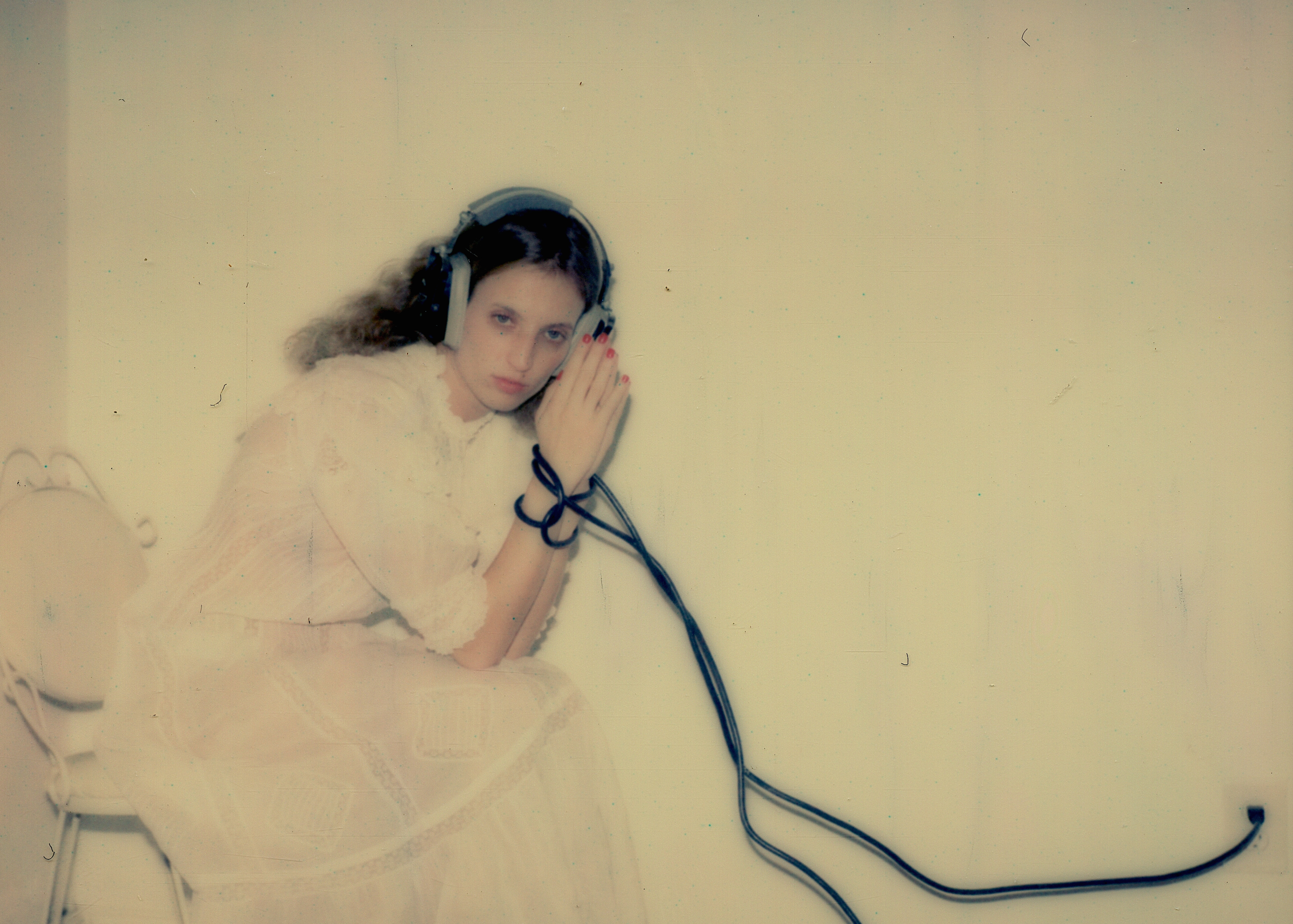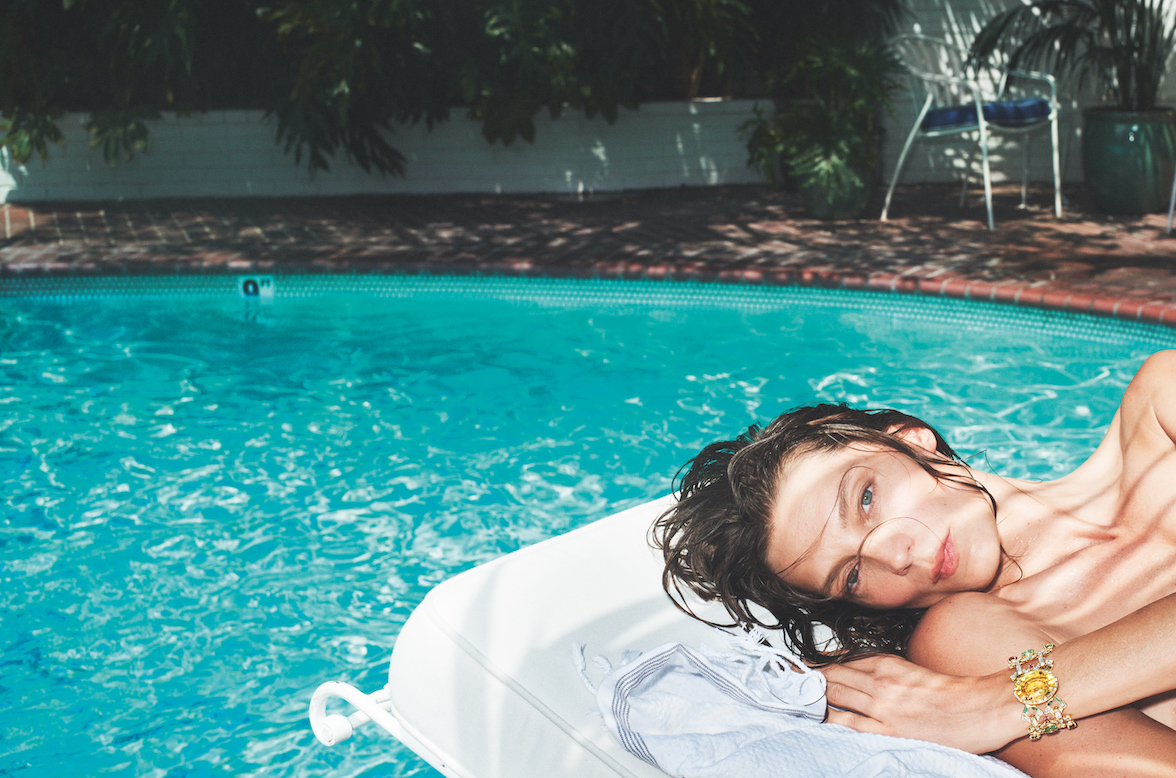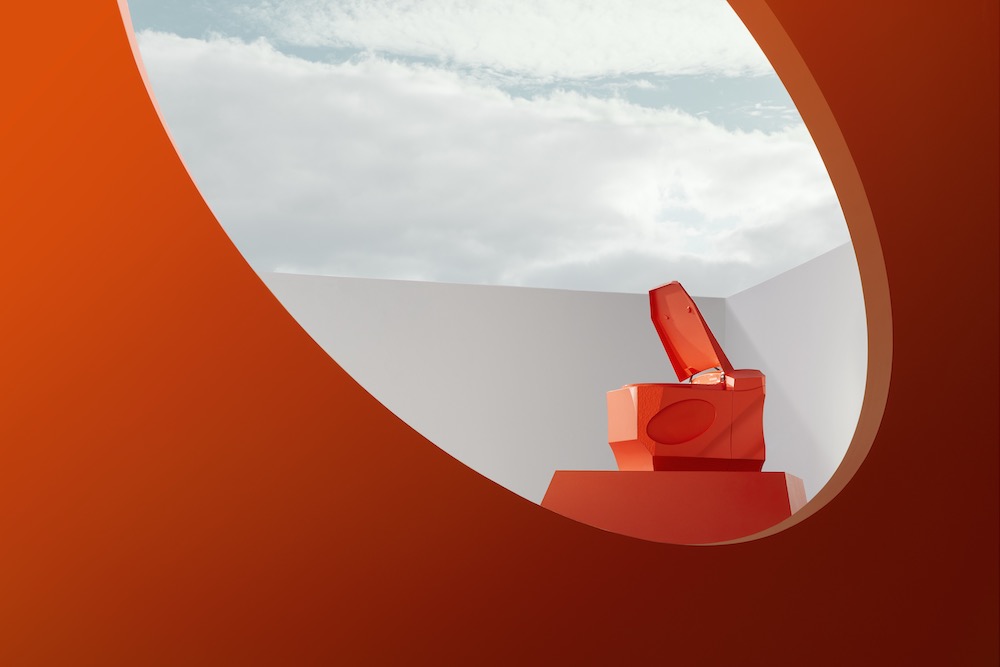Last November, Petra Collins released her first book with Rizzoli, Coming of Age. The cover features an image of her sister, Anna (who appears prominently in Collins’s work), overlaid with embossed text bubbles. It encapsulates Collins’s approach to image-making—mixing nostalgia with the present moment, capturing not just the culture of youth but the feeling, the memory.
Collins is just 25 years old, but for years now she has embodied the spirit of her generation. She grew up with the Internet, understanding its potential, both positive and negative. She started taking photographs in her teens, began publishing them for Tavi Gevinson’s Style Rookie, and soon became a sensation. Her images are dreamy and feminine, but also raw and emotive. Aware of the power she has behind her lens, Collins has made a point to cast and feature a diversity of women not seen in the industry. She has a true vision.
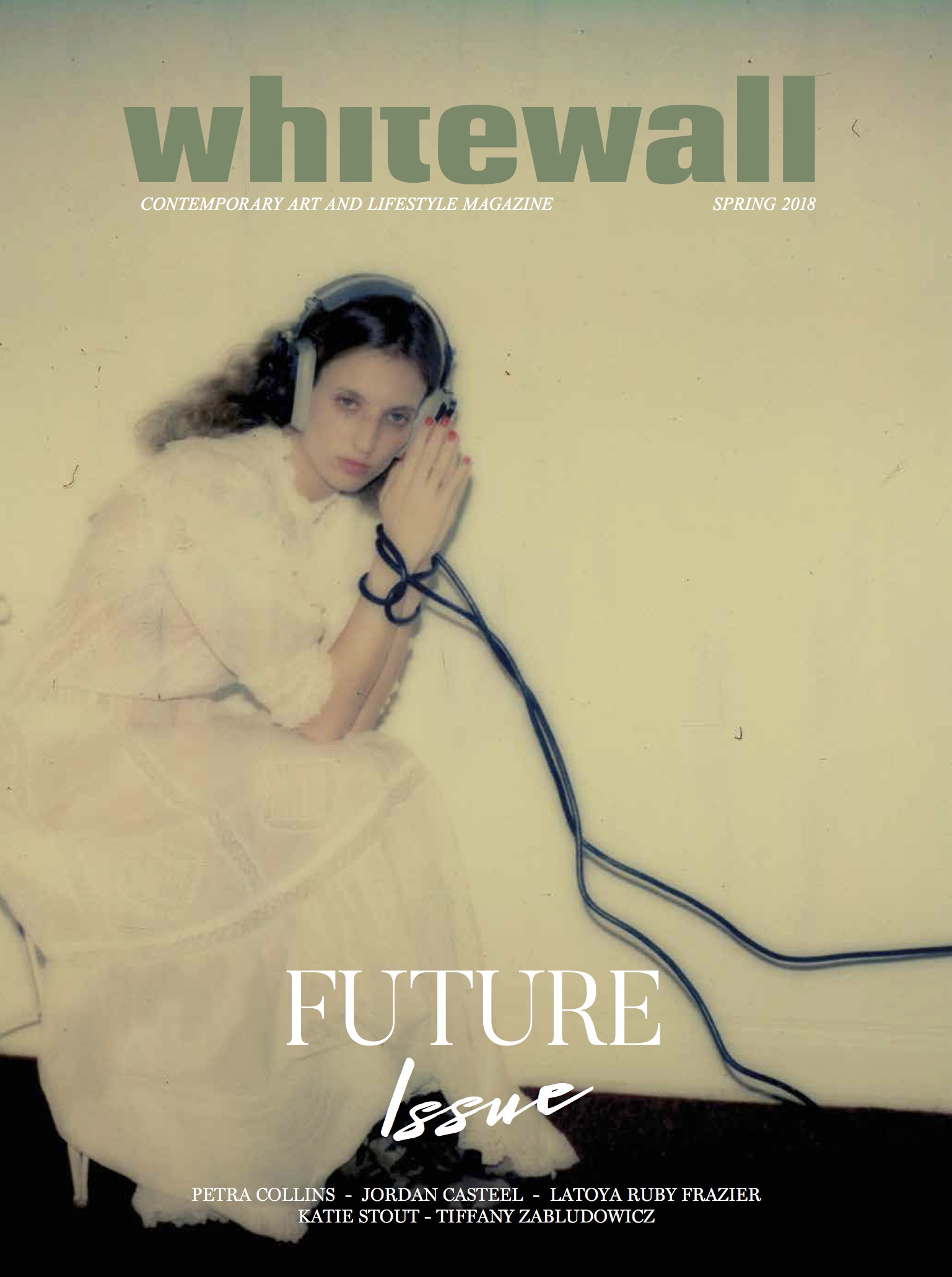
Whitewall’s spring 2018 Future Issue cover, featuring Petra Collins shot by Moni Haworth.
She’s an ongoing collaborator with Alessandro Michele at Gucci; she has shot covers for Allure, Glamour, and Garage; and she has created films for Bulgari, Fader, and Adidas, as well as Selena Gomez’s Fetish music video. That production, and her “24hr Psycho” photographic series of close-ups of young women crying, bathed in blue, green, pink, and orange light, are heavily influenced by her obsession with the horror genre.
Whitewall met with Collins on the Lower East Side in New York a few weeks before the book came out. After grabbing coffees at Dimes, we sat down to talk about how her early photographs provided an escape, the love of dance she shares with her sister, and what’s next on her horizon—a feature film.
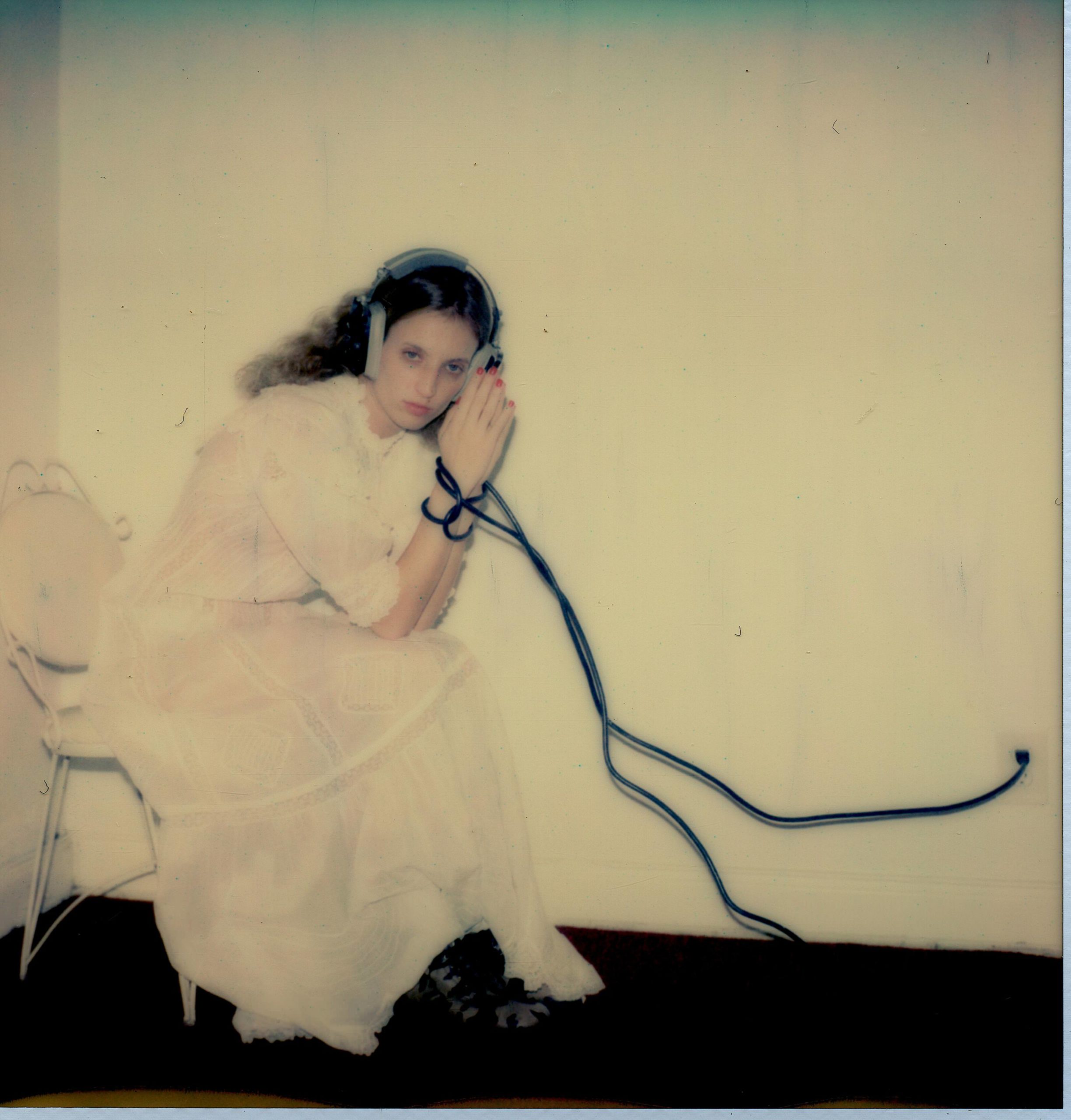
Photo by Moni Haworth
WHITEWALL: Coming of Age seems incredibly personal, including a range of your work as well as your own writing. What made you feel ready to publish something so close to heart?
PETRA COLLINS: It’s really personal. Rizzoli said, “You can do whatever.” I originally wanted to make a new book of work. But then I realized, I have a crazy backlog of all this work. I started taking photos when I was 15. I live such a public life, and I’m always very careful of how people perceive me, especially young girls. I wanted to be able to have all that work [in one place] and also be able to write my story. It’s not a conventional one and it’s something that I would have really loved to have read when I was a teenager.
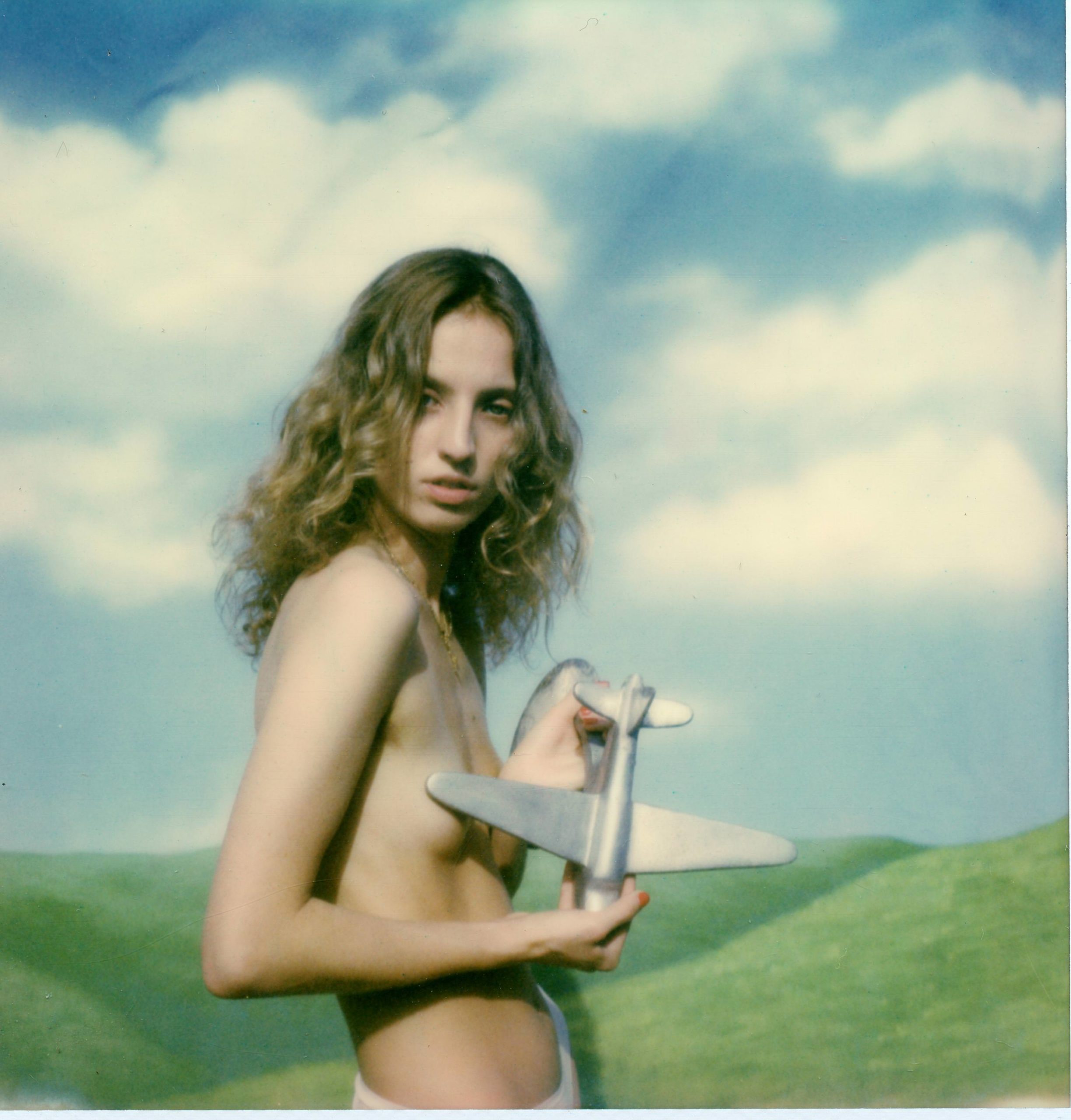
Photo by Moni Haworth
I had such a rocky, troubled childhood. I had a lot of problems as a kid. I wanted to make something that felt super-personal, but also safe. I wanted to show a story that people can connect to. To be like, “I’m also a scared, dyslexic, poor young person and I can do this as well.” I’ve always created work because I have to and because I love it so much. It was always play for me. So writing about it, which I haven’t really done, ended up being very easy and it made me open up a lot more. It’s a nice marker of that time in my life and the things I created.
WW: Looking at nearly a decade of work, was there anything you realized about yourself and your art that you hadn’t before?
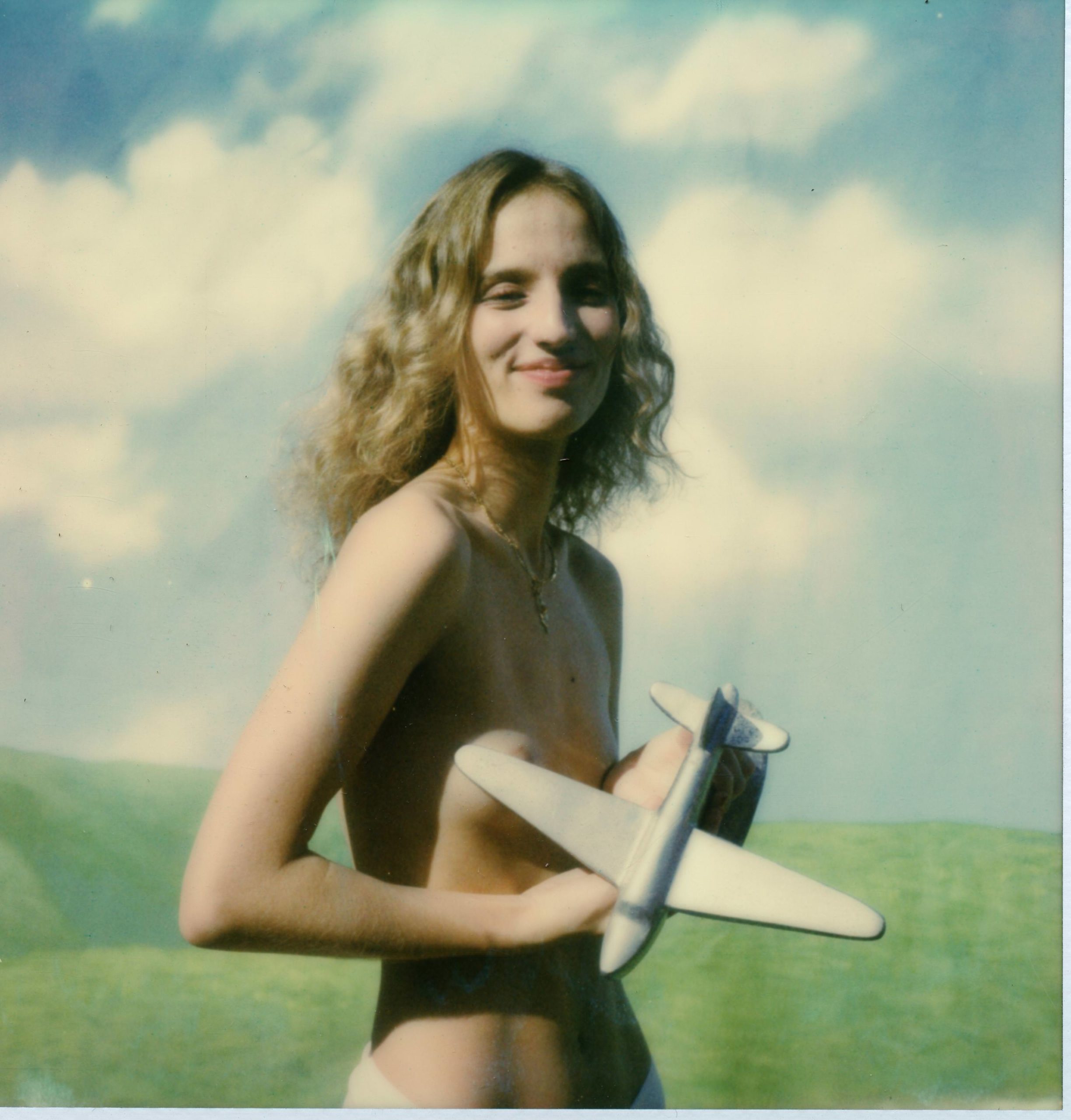
Photo by Moni Haworth
PC: It’s interesting to see where my thinking shifted and where I as a teenage girl had changed and moved on. Or realized the power and intention that I had behind the camera. When I started taking photos, they were kind of very violent. I had come from a ballet background. I was also coming of age, when I was 12 or 13, in such a super-sexualized pop world—The Pussycat Dolls and Paris Hilton.
I wanted to be a ballet dancer, and the ballet world is so wild. If you don’t already have problems with your body, you do once you do ballet. I was premature, I’ve always been this tiny, very sickly kid, but I remember my ballet teacher would tap my hip bones saying they were too wide. So I was very aware of my body and I was also very aware of the power that I held having that body, a body that was weirdly reflected in media—prepubescent—as sexual. I realized I have this sexual power. I am this object. It ended up really twisting my thoughts.
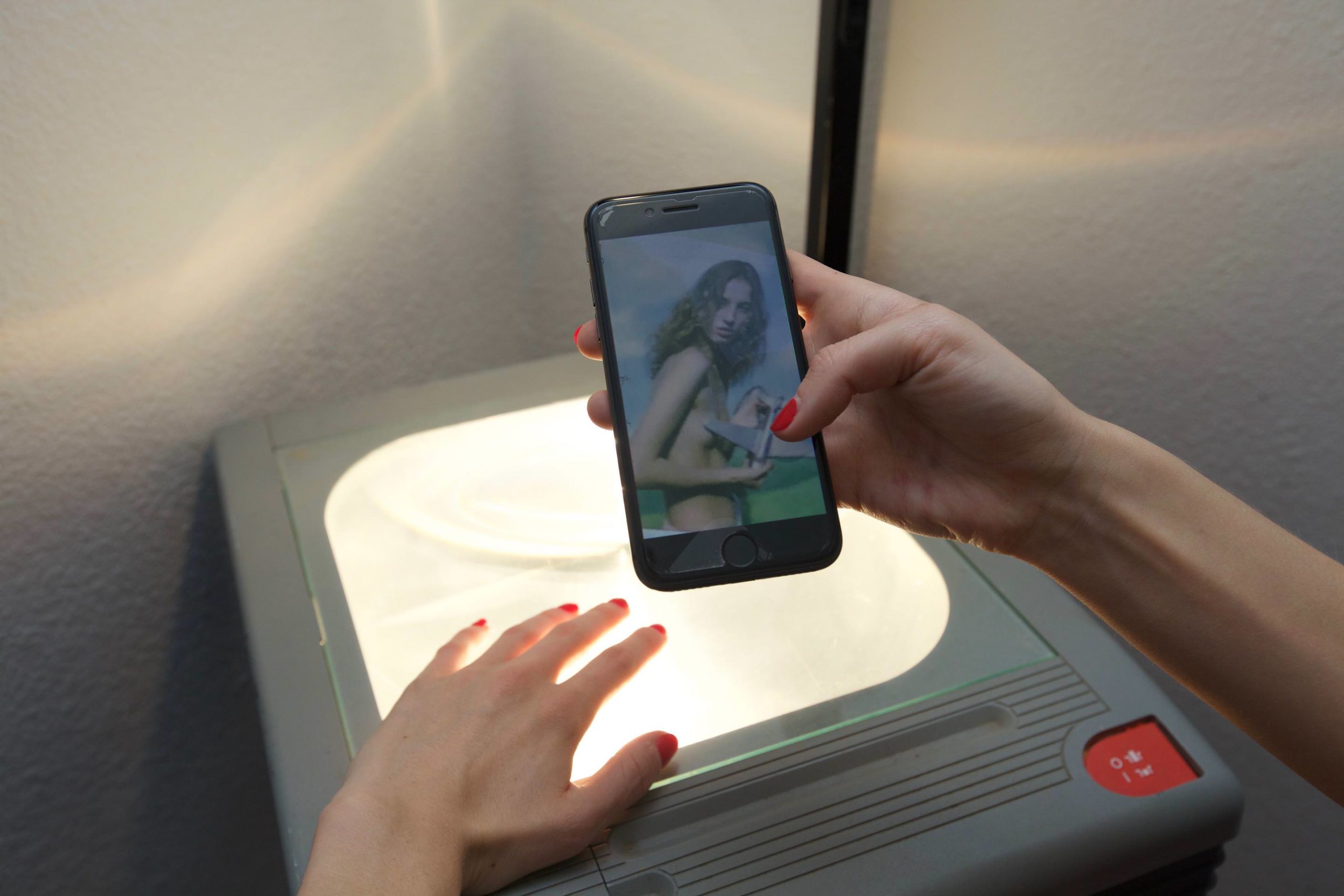
Photo by Moni Haworth
When I was in grade three, I was put in special ed because I had trouble reading and writing. So my only value I felt I had was my physical body.
With those first photos, it’s funny to see the male gaze inside of me, taking these kind of violent photos of these girls, and me figuring out how to capture how I felt and how they felt and not use them as objects. I wanted to create something that was sexy but not, because I was thinking about sex. It’s interesting seeing those photos and then seeing them move and change with how my perspective of myself changed.
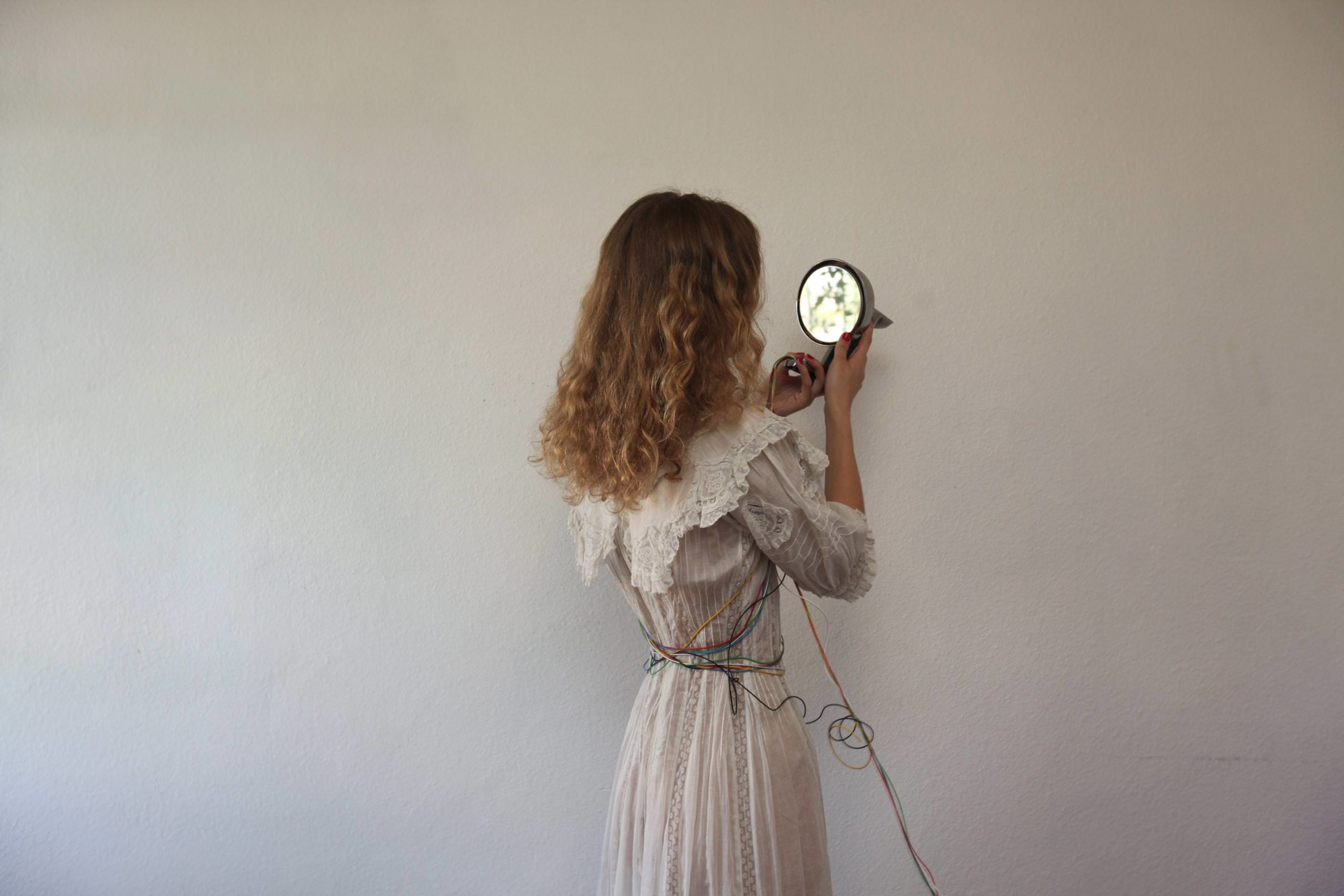
Photo by Moni Haworth
WW: From 15 to even 18 is a huge leap in perspective. You also weren’t able to keep dancing because of a knee injury. Do you think that violence you mentioned in those early photos was also a response to not being able to pursue a path you’d imagined for yourself in ballet?
PC: It’s crazy as a young person to know my body physically can’t do the thing I love. But it can be sexualized still. I can’t move it or do anything with it. Which was such a mind fuck. I’m still untangling that. It was so deep in me.
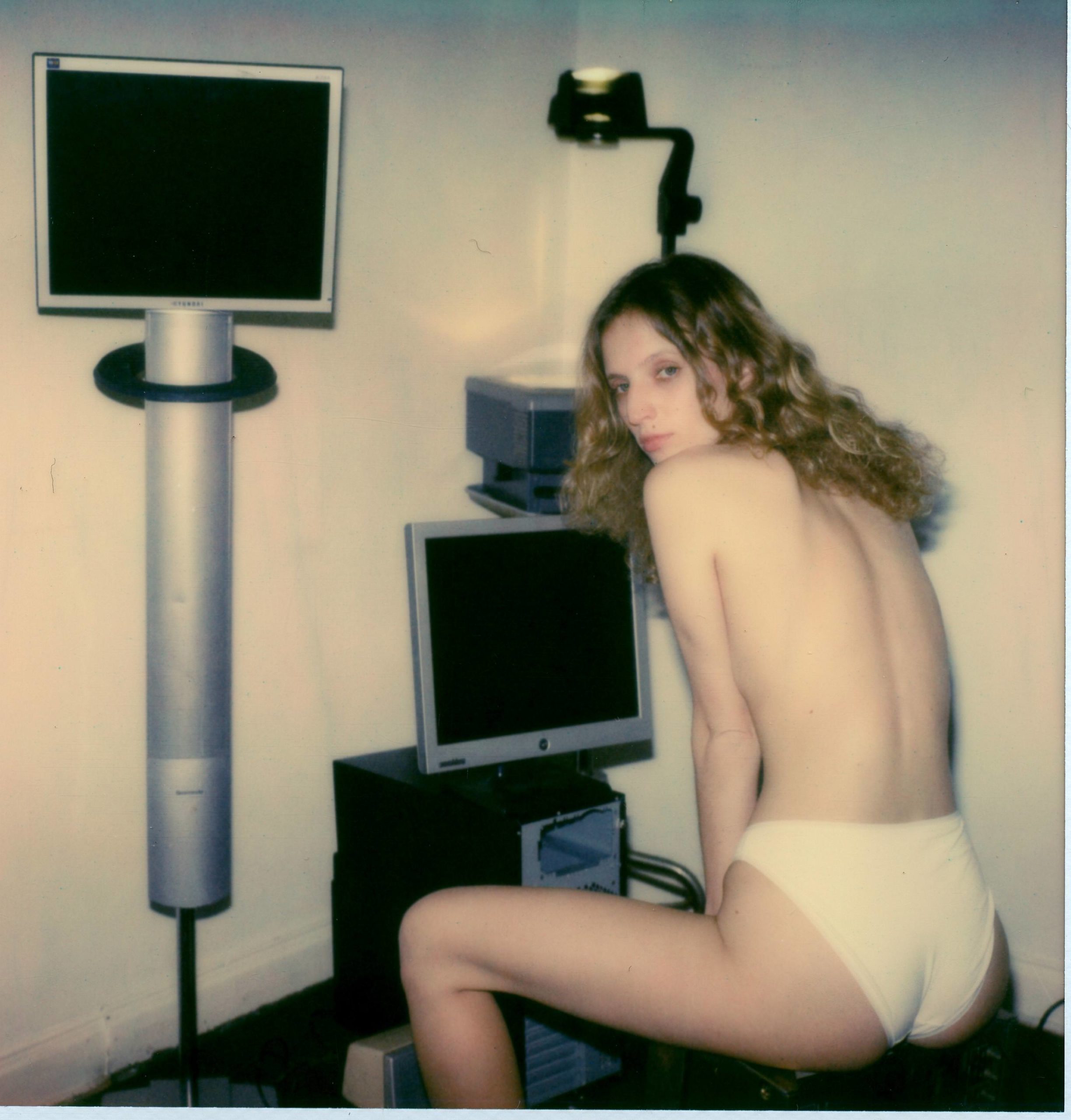
Photo by Moni Haworth
In ballet, you’re surrounded by mirrors. My sister, who is such a beautiful person, goes to the National School of Ballet in Canada. She just finished a teacher-training program. She doesn’t want join a company. She wants to teach kids dance, but in a healthy way. She told me this one story. I also had problems in ballet because I’m dyslexic. It warped the way I would learn things. She had a kid in her class, who she said was similar to me, and she figured out how to teach her. It just broke my heart in the best way. It’s so important to have good teachers in the world because it changes your life.
WW: You photograph your sister so much, and she’s on the cover of your book. How do you see her in your practice?
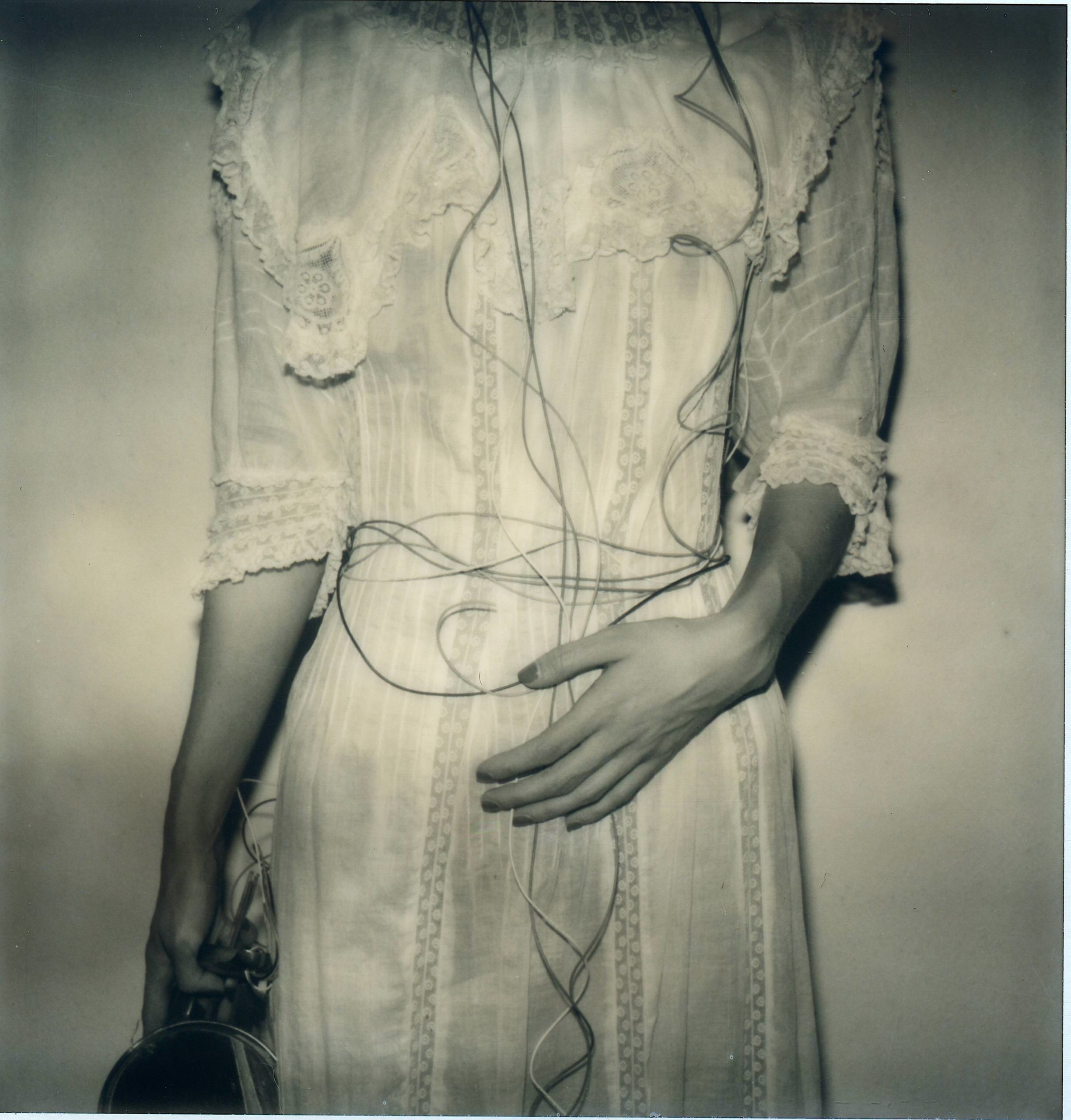
Photo by Moni Haworth
PC: She and I were sort of parents to each other. Our parents didn’t properly take care of us, so we’ve always been so, so close. It’s another woman in my life who I was living through. I would photograph her friends and I would photograph her and myself.
We were going through so many crazy things with our family dynamic and everything happening at home. The way I escaped was getting into a relationship I shouldn’t have been in. I didn’t live a normal teenaged life at all.
WW: You jumped ahead.
PC: Yeah, I moved out very early. I was supporting myself very early. And then I would watch my sister, not that she had a normal teenage life, but I would constantly photograph her friends because she had the experience I never had tied to high school. I was already checked out. It became this beautiful fantasy of mine, photographing them, and also all the darkness that they had, too.
So I was doing that and then I ended up working with Tavi and Rookie and that changed my life. I was already creating things for myself all the time, but they gave me a theme very month. I really got to play around with photo and image making. And my sister and those girls who I would photograph and plan and create things with. It would be amazing to have that integrated into every teenager’s life, to be able to create any type of world. It really helped me.
WW: Through your images, you were able to create your own escape?
PC: It’s how I played and dealt with my emotions. My mom is a very interesting person in my life, and she has dealt with mental illness her entire life and it’s something I have to deal with her. She took so many photos in my childhood. I was going through them because I wanted to put them in the book. A lot of them are dark, and it was interesting to see her viewpoint come out in those family photos.
WW: In the family photos, like for an album, not a hobby?
PC: Yeah, which I never realized. There are some images that are so beautiful and powerful. One my father took and one my mother took. The first is me turned away as a baby at sunset and the sky is this crazy orange. You can’t see who I am, and my dad from the side giving me a kiss. It reminds me of one of my favorite books, Wim Wenders’s Once, and his quote, “‘Once is not enough,’ I used to say as a kid. That seemed very plausible to me, ‘once upon a time.’ But when you take pictures, I learned, none of that applies. Then once is ‘once and for all.’”
With these images especially and the stories that they told, that don’t actually exist, they exist in the mind of whoever experienced them. That photo of me and my father could have been taken any other way. It could have been a cute photo of me facing the camera.
And there’s another photo of me again facing away from the camera. My mom’s eyes are half closed. It’s funny that those were the images they chose to put in a family album. I always go back to that quote and that photo and that sort of way of thinking and seeing photos.
WW: When did you realize that with your own photographs?
PC: The first time I realized it, the power I had behind the camera, was when I was shooting my sister’s friends. They were sitting on my bed smoking. It was a bright sunny day. The images in my head were carefree and fun.
It ended up being this super-dark photo. And I realized the things they were talking about were dark. Their bodies, boys, whatever, and I realized how much I had affected the outcome.
WW: The book ends with your most recent series of photographs of your family in Hungary. Can you tell us about shooting those?
PC: Those photos ended up being so . . . I had no intention of making them look as fantastical or this biblical. But my sister hadn’t been back to Hungary and seen my cousins in eight years. I set out to make kind of documentary-style photos. And it ended up, the way my cousins looked at me through the lens was something that I never thought that I would get . . . that gaze and that they would stand that way.
I think that they were really excited to be in front of the camera. They are my favorite subjects ever, actually.
WW: Is there a difference between your expectations of how things will come out in your personal work versus commercial work where things can be more controlled?
PC: The thing is, you never know what you’re going to get. I don’t even think about it anymore. You learn you’re not going to get what you think you’re going to get.
I have some of my commercial or editorial work in the book. I love doing it—it’s a playground where I can experiment with lighting, subjects, color, and tone. And I love doing it because it’s also such a special platform to be showing work. I started as a young girl. As a woman and as a young person to be taken seriously in any capacity is tough. I love doing editorial because it’s a wider bigger platform, a bigger place for people to see work. I get to do these campaigns where I get to cast and decide the way I shoot it. I’m not a photographer for hire. I can do what I want to do. I get to create campaigns that are more art pieces of mine. We’re obviously selling something, but I’m having fun creating these images.
WW: Speaking of women getting a platform, the book features essays by Laurie Simmons and Marilyn Minter. Tell us about your relationships with them.
PC: It’s so important and special to me. I can’t believe that those women wrote for my book. But throughout my career they’ve both been very supportive. I remember learning that Marilyn Minter liked my work and was telling other people she did. And Laurie has always been so kind and supportive. It’s so cool to see their view on my work, and it’s also very important to have that connection with the women that came before me. I’m obviously creating under them and have so much respect for them. Women and people in general from any minority are so much more powerful in groups, and it’s so important to see us supporting each other.
WW: Finishing up, this book, having this time to reflect, did it make you think about what’s next in a different way?
PC: Yes, totally. I really want to make a feature film. It’s always sort of showed in my photos. I’ve always been obsessed with horror and with that genre and the power of that genre to be able to subvert. One of my series is the “24hr Psycho” series, all the girls crying that are fantastical and intense. That was a step toward creating imagery that deals with mental illness in women, specifically. Seeing those images on a big scale made me super-excited to create something moving. I’ve always been so inspired by theater and movies, and there’s such a powerful thing in seeing something in theaters that you can relate to. Seeing something on a big screen.
WW: What kind of films are you connecting with?
PC: I always loved The Exorcist. I remember, my mom made me watch it one night and I had an exam the next day. I love her for that. When I was 12 or 13 was when I developed panic attacks, I developed depression. I know The Bell Jar is very dated, but she had given me that and was basically like, “You’re not alone.” I read it and I was like, “Wow, I’ve never heard a woman speak about the same thing I feel.” And those same compulsions and obsessions. It was just so powerful for me to read that because that’s how I felt.
The Exorcist and Carrie are great coming-of-age films. The Exorcist is really about a girl going through puberty. And then, at the end, having to have a room full of men trying to change her and take her out of it is so relevant.
I used that scene from Possession for the music video with Selena Gomez, Fetish. Choreography-wise, it’s such a beautiful scene where she is having that full-on seizure moment, laughing and spitting blood.
It’s such a time of turmoil today and there are two types of movies that come out of that—things that are idealistic, or very violent films. Those both have different catharses to them. I’m ready to do the scary side.
WW: Did you see the Fetish video as a way to start experimenting with a horror film?
PC: That one is really my baby. I got to do everything that I wanted. That’s been my whole life’s worth of inspiration put into one thing. The way that we worked on it together . . . When we started doing the music video, I didn’t know too much about her. And she’s a huge horror fan. The first time I went to her house, she was lying down in the middle of the day watching Chucky. I was like, “Okay, perfect.” I showed her Possession, I showed her all these things, and when she got on set she just went for it. We got to create this really dirty, crazy thing.



